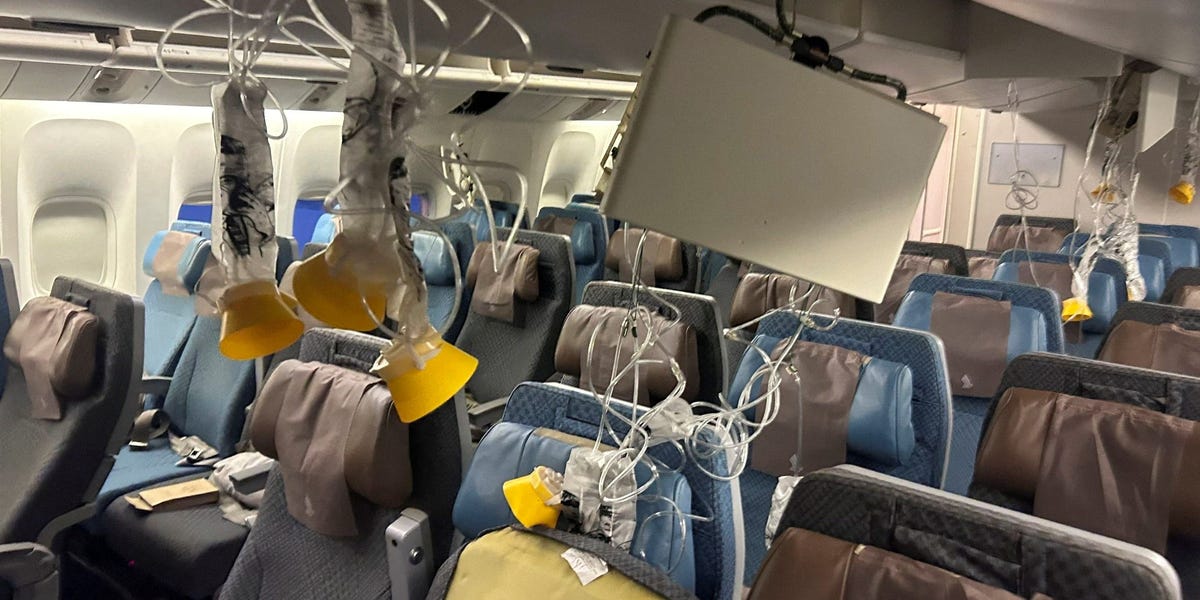The turbulence on the deadly Singapore Airlines flight last week was so severe that the plane dropped 178 feet in just four seconds, investigators say.
The report details just how suddenly the plane experienced a catastrophic drop, one of the worst turbulence incidents in recent history.
While flying over Myanmar, the plane most likely passed over an area developing bad weather, which caused a “slight vibration” for about 20 seconds, according to the report.
The report says an upward air draft caused an uncontrolled altitude and speed increase. In response, the autopilot — which remained engaged despite the drop — pulled the plane back down in an attempt to reach 37,000 feet. The pilots simultaneously applied speed brakes to reduce the spiked airspeed, the report said.
The plane then experienced — in just 4.6 seconds — a rapid change from positive to negative G force and back again, causing passengers who weren’t wearing their seatbelts to fly out of their seats and then get slammed back down again, according to the report.
The report found that during those few seconds, the plane fell 178 feet. The pilots reacted by disengaging the autopilot and manually stabilizing the aircraft for about 20 seconds before re-engaging the autopilot, investigators said.
According to the report, the entire incident, from slightly rough air to deadly turbulence, lasted just one minute and two seconds.
In that short time, a 73-year-old British passenger was killed, and more than a hundred other people on board were hurt, including several with paralysis, skull and back trauma, and brain injuries, The Associated Press reported.
Passengers onboard the jet said the seatbelt sign was not on at the time of the event, Forbes reported. However, investigators said audio from the cockpit voice recorder “heard that a pilot called out that the fasten seat belt sign had been switched on.”
According to the investigators’ report, once the pilots learned that passengers were injured, they diverted the flight to Bangkok. The flight didn’t encounter any more turbulence before landing safely.
Singapore’s transportation bureau said it’s still investigating the turbulence. Singapore Airlines did not immediately respond to a request for comment from Business Insider.

